A facelift is one of the most popular cosmetic surgeries in the UK. By addressing wrinkles, fine lines, sagging skin, and other visible signs of ageing, the procedure can restore patients with a revitalised youthful appearance. However, surgically manipulating the delicate features of the face requires specialised skills, such as those possessed by our recommended facelift surgeons
Treatments
1Results
6-9 monthsSurgery time
2.5 hoursHospital time
6 hoursMobility
6 hoursWashing
3 daysStay home
4 daysOff-Work
up to 10 daysExercise
2-3 weeksFull recovery
4-6 weeksRepeat
7-10 yearsFacelift Before and Afters
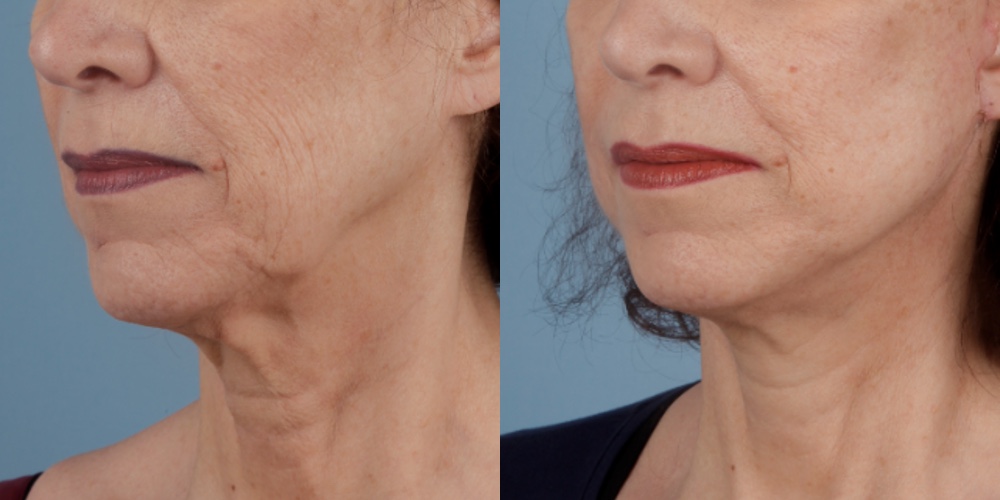
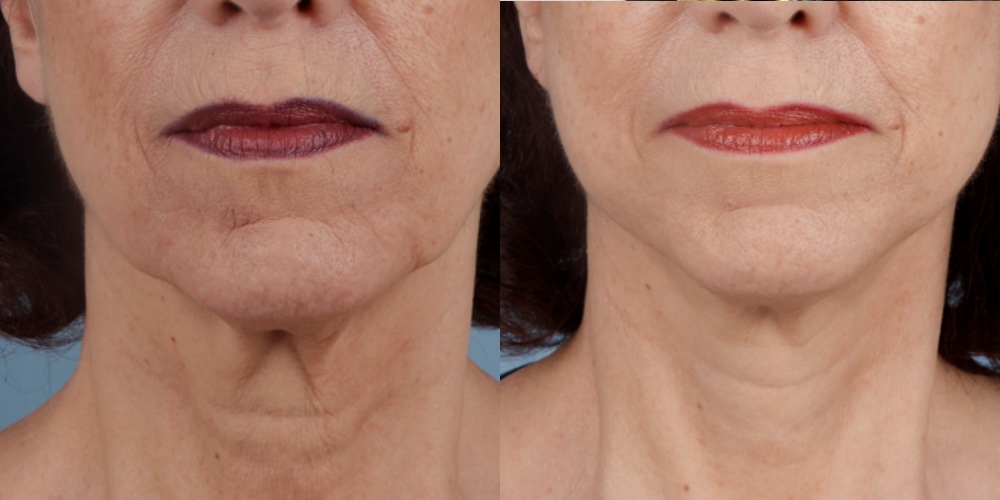

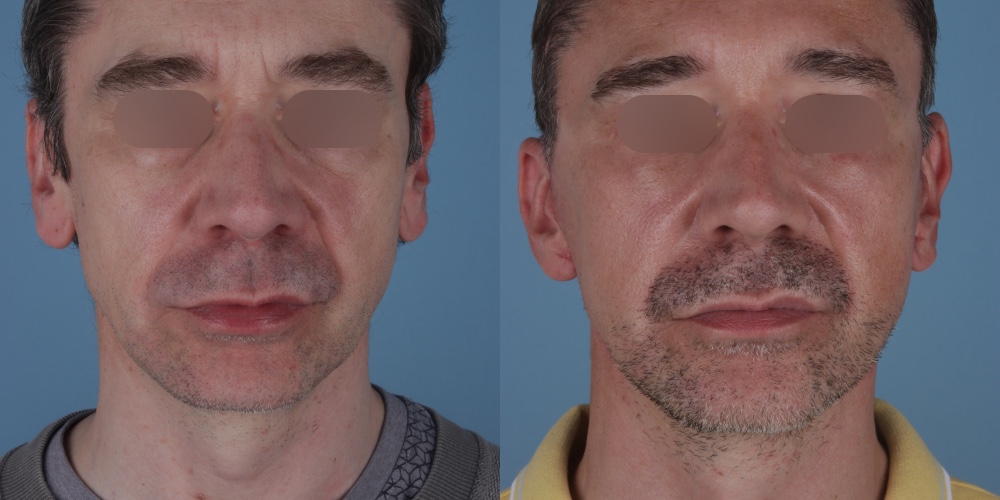

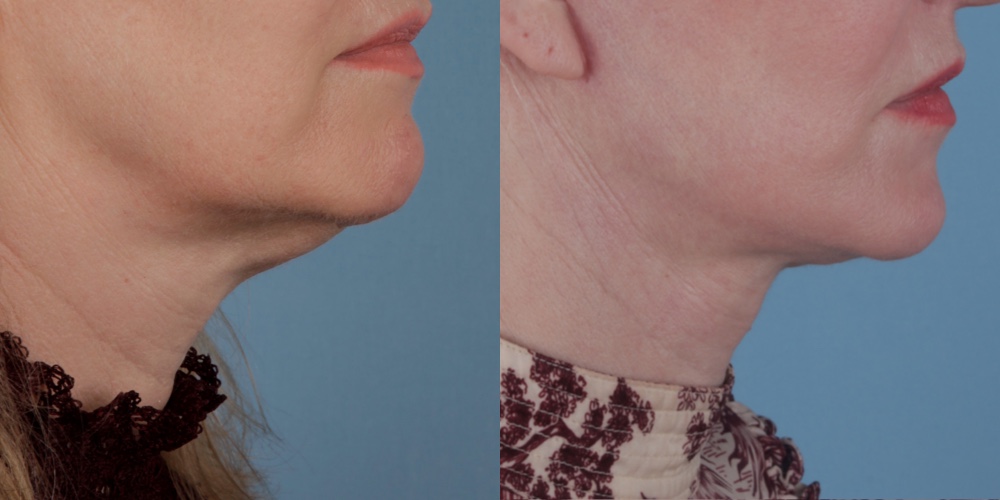
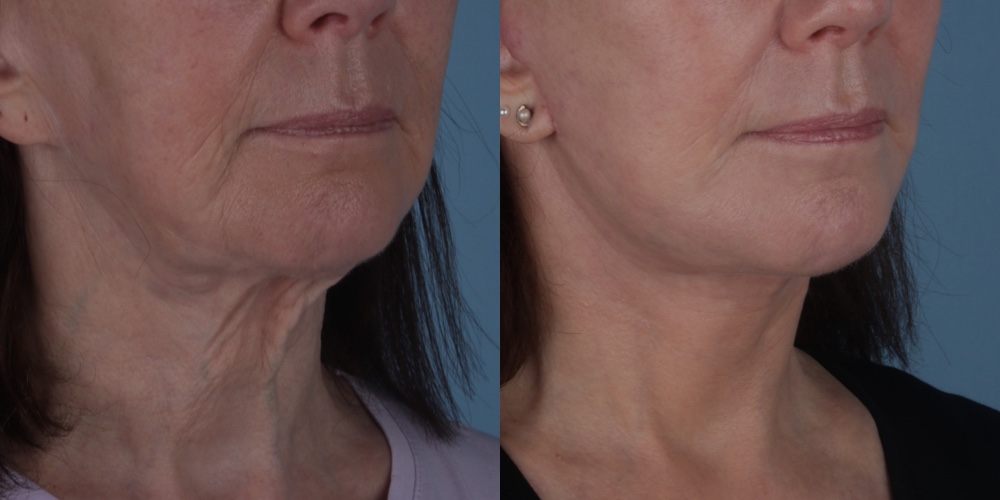

What is a Facelift?
Facelift, also known as Rhytidectomy, is a cosmetic surgical procedure that removes or reduces loose skin that gradually loses its natural elasticity around the eyes, mouth, and jawline. A facelift is one of the most common cosmetic surgeries in the UK as it offers patients a chance to reverse the signs of ageing and rejuvenate their appearance with natural results. There are various techniques and types of facelifts.
Why Have a Face Lift?
Depending on your facial structure, skin elasticity, and desired results, plastic surgeons and facial reconstruction experts will determine the best options and type of facelift procedure best suited to you. Both men and women who choose the facelift surgery option are usually inclined to certain facial features such as:
- Visible jowls and excess sagging skin in the lower jaw – resulting in an undefined jawline
- Deep lines around the mouth
- Sagging skin around the cheeks or droopy cheeks
- Loose skin around the neck
Our recommended experts
Our facial plastic surgeons in London consist of two multi-award-winning aesthetic plastic surgeons, Prof. Ghassan Abu-Sittah and Prof. Ali Ghanem. When performing facelifts, they use a multidisciplinary approach that combines their specialities to produce optimal results and minimise scars. The synergy of this approach ensures that patients receive the best treatment for their specific cosmetic concerns.
Additionally, in some instances, they use a component derived from the fat cells removed in the procedure. to restore volume and further achieve the desired results. The patient’s own fat cells are also commonly used to enhance the prominence and the quality of the skin and boost the natural healing processes.
Techniques Used for Facelifts
When we refer to different types of facelift procedures, we refer to two things. The first is the surgical technique used by the surgeon, which is determined based on their medical discretion and evaluation.
The second is the area of the face on which the technique will be applied, based on the patient’s concerns and desired results. Consequently, the surgeon’s evaluation and your informed choice of surgery will determine the severity, downtime, and longevity of the results of your procedure.
Types of Techniques
SMAS Facelift
The SMAS facelift technique is considered a relatively more invasive method of facelift surgery. It addresses the Superficial Musculoaponeurotic System (SMAS) layer – the firm tissue layer covering the underlying muscles spread across the face and neck. Through an incision across the hairline on each side of your ears, your surgeon will lift and tighten the SMAS layer and facial tissue towards your ears, removing any excess skin.
MACS Facelift
The Minimal Access Cranial Suspension (MACS) facelift technique is a less invasive technique that is suitable for patients with mild skin laxity. Your surgeon will tighten the SMAS layer utilising special suspension stitches to avoid longer and deeper incisions. This surgical option is thus considered less complicated and more commonly used.
Types of Procedures
Full Face Lift
A full facelift addresses skin sagging and structure in the entire face and neck. Incisions will be made around the ears and along the hairline. Using the SMAS or MACS technique, the surgeon will tighten the structures of the face with sutures.
Mini Facelift
A mini facelift is a popular option for patients with moderate skin laxity concerns who wish to improve the appearance of the mid-lower section of the face, namely, the mouth, cheeks & jowls. A small incision in the front of each ear allows surgeons to modify the patient’s soft facial tissue in a minimally invasive method, also ensuring scarring, recovery and risk is minimal.
Deep Plane Facelift
A deep plane facelift is recognised as the gold standard of facelifts, as it provides longer-lasting results by correcting laxity in the deep structures of the face.
When performing a deep plane facelift, the surgeon operates beneath the SMAS layer, lifting and tightening the skin and muscles together as one unit. The deep plane facelift uses the SMAS technique and releases the masseteric and zygomatic ligaments that hold the SMAS layer in place. As a result, the surgeon can produce a significant vertical lift to the entire face.
As a result, a deep plane facelift can produce the most natural-looking results that last 2-3 years longer than the standard facelift. Furthermore, if done correctly, it can correct specific signs of ageing, such as smile lines and nasolabial folds, more effectively than a standard facelift.
Extended Facelift
An extended facelift refers to a facelift using the SMAS technique, where the surgeon tightens the structures of the face while getting rid of excess skin and lifting the skin and muscles of the SMAS layer. An extended facelift includes a fat transfer and brow lift. This combination allows your surgeon to address any volume loss in the face and the skin laxity around the forehead and eyes.
Revision Facelift
A revision facelift is a secondary cosmetic surgery that addresses issues stemming from a previous facelift procedure or attends to the continued effects of the ageing process post the initial facelift procedure. Corrective and revision surgery is a speciality of our recommended facial plastic surgeons who have the particular skills, expertise, and ample experience that such surgeries require.
Facelift Alternatives
There are many less invasive alternatives to a facelift surgery that may better suit the needs of some patients:
Thread Lift
Thread Lift, sometimes known as ‘Puppet Face Lift,’ is a non-surgical form of the facelift procedure. As such, it is ideal for patients who are not yet prepared to undergo a surgical face or neck lift and do not have considerable skin laxity issues.
The surgeon positions the thread as anchors, which they then use to carefully tighten the skin. It is chiefly used on the jawline, the mid and lower face, including the cheeks, and in the neck. As a result, a thread lift elevates and tightens the skin contours in a minimally invasive way.
MyEllevate
Also known as a zoom lift, MyEllevate is a minimally invasive technology that tightens and elevates the skin around the neck and jawline. Performed under local anaesthesia, this is a quick procedure that doesn’t require any incisions like a facelift. Instead, the surgeon places sutures behind the ears and under the jawline using a suture rod.
This procedure isn’t as comprehensive as a surgical neck lift which lifts the entire SMAS layer. However, in contrast to a thread lift, the surgeon places the sutures deeper into the skin and closer to the muscles, thus providing a more substantial elevation of the skin and muscles.
Morpheus8
The Morpheus8 treatment aims to deliver controlled heat at varying depths in the skin layers. It channels micro-injuries in the skin layers, consequently helping the body to stimulate a natural healing response. Due to its controlled heating and sporadic delivery, Morpheus8 can target many indications without damaging the surface of the skin.
Endolift
Endolift is another facelift alternative that is sometimes referred to as the “lunchtime lift” because it is a relatively quick procedure that requires no downtime with immediate visible results that enhance over time.
It is a minimally invasive laser-based technology that promotes skin tightening and reduction in skin laxity, with a scar and knife-free procedure. By stimulating collagen production, among other things, Endolift promotes the toning, firming, and, markedly, the remodelling of the skin.
What to Expect When Getting a Facelift?
As with other treatments and procedures carried out, you will meet your surgeon prior to your operation for a consultation. During your consultation, you will discuss your concerns, your desired results and expectations, and whether a surgical option is the right path for you.
The specifications of your facelift surgery procedure depends on the type of facelift procedure you undergo. See the table below:
| Mini Facelift | Full Facelift | Deep plane Facelift | Extended Facelift | |
| Duration | 1.5 Hours | 2 Hours | 4 Hours | 4 Hours+ |
| Incision | Front of the ear | Along the hairline and front of the ear | Along the hairline, in front of the ear, and behind the ear | Along the hairline, in front of the ear, and behind the ear |
| Anesthesia | Sedation / GA | Sedation / GA | Sedation / GA | Sedation / GA |
| Day-Case procedure | Yes | Yes | Yes | Yes |
Planning Your Facelift
During your consultation, a full medical history will be taken to uncover any allergies, medication administration, or other issues which might be unsuitable for cosmetic surgery. Your surgeon will also outline a strict preparation plan for you to follow prior to your facelift surgery; however, in general terms:
- In the 6 weeks leading up to the procedure, all patients are advised to avoid all forms of nicotine.
- In the week before the facelift procedure, patients are advised to avoid taking any non-steroidal anti-inflammatory drugs (NSAIDs), including, among others, ibuprofen, naproxen, and high-dose aspirin.
- On the day of your facelift, no drinking or eating for at least 8 hours prior to your surgery.
- Following your procedure, you will have to arrange transportation home in advance, as you will be unable to drive.
Typical Facelift Recovery Time
The recovery process from a facelift varies from patient to patient, depending on several factors, including the patient’s age and the complexity of their surgery. Outlined below is the typical facelift recovery timeline for the average patient:
2 days – Avoid showers and getting your bandages wet.
5 – 7 days – Stitches are removed. Avoid driving and elevate your head while sleeping to reduce swelling.
2 weeks – You can safely return to work. Avoid strenuous activity, saunas, and massages.
3 – 4 weeks – Bruises, scars, and redness should have subsided. You can return to your regular exercise activity.
6 – 9 months – Results of your facelift procedure are fully visible.
As with all the treatments and procedures, patients need to maintain a healthy diet for a quicker and safer recovery following their facelift surgery. Lifestyle, including diet, exercise levels, sun exposure and alcohol and smoking habits, all impact our continued ageing process and might serve as an indication of additional required maintenance treatments.
How Much Does a Facelift in London Cost?
On average, the cost of a facelift in the UK ranges from £8,000 to £15,000. However, prices vary greatly depending on a range of factors including the type of facelift and surgical technique you require. You will receive the exact price of your treatment after discussing a bespoke solution with your chosen facial plastic surgeon.
| Treatment | Price for face | Price for neck | Price for face and neck |
| Mini face/neck lift | £8,900 | £5,500 (using MyEllevate) | £10,900 |
| Full face/neck lift | £10,900 | £5,900 | £14,900 |
| Deep plane Facelift | £12,900 | £8,900 | £17,900 |
| Extended face or neck lift | £14,900 | £9,900 | £24,900 |
Complementary Procedures
Facelift surgery is safe to undergo in combination with a variety of other invasive and non-invasive procedures according to individual goals and desired results that you will discuss during your consultation. It is commonly combined with the following treatments:
Facelift and Blepharoplasty
Blepharoplasty, also known as eyelid surgery, is a procedure that removes excess skin and fat from around the eyes to provide patients with a more youthful face, and in some cases, to improve their peripheral vision. The surgery can be performed on either or both the upper and lower eyelids to lift the eyelids and remove under-eye bags. Many patients combine blepharoplasty with a facelift for a more comprehensive transformation of their face.
Facelift and Lip Lift
A Lip Lift is a surgery that raises the upper lip to shorten the distance between the nose and the upper lip (known as the philtrum). As a result, the lip appears fuller and proportionate to the patient’s facial features. An increase in the length of the philtrum is another consequence of the ageing process. Therefore, many facelift patients also choose to undergo a lip lift to achieve a more youthful look.
Facelift and Brow Lift
Extended facelift treatments include brow lift surgery. A brow lift, also known as a forehead lift, is a surgery that gets rid of the skin laxity around the eyebrows and forehead. As a facelift addresses the skin laxity in the mid and lower face, patients with skin laxity around the brows and forehead also choose to undergo a brow lift for a more comprehensive and cohesive result.
Facelift and Fat Transfer
In addition to a brow lift, extended facelift also includes a fat transfer treatment. Fat transfer is a surgery that harvests excess fat cells through liposuction surgery from one area of the patient’s body and injects it into another area of the face or body to add volume. As volume loss is a common symptom of ageing, many facelift patients also want to enhance certain facial features such as the cheeks and chin.
Facelift and Rhinoplasty
Rhinoplasty, commonly called a nose job, is a surgery that reshapes the nose and increases or decreases its size. The surgery aims to restore patients with a balanced facial profile, and surgeons sometimes perform it for medical reasons to alleviate breathing issues. Many facelift patients also undergo a rhinoplasty to improve their facial profile.
Facelift and Energy-based Treatments
Our recommended specialists also offer energy-based treatments that utilise the latest technologies in cosmetic surgery, such as Morpheus8 and Endolift. These treatments promote the skin’s production of collagen and elastin, thus improving its tone and texture. Therefore, many patients combine their facelift procedure with an energy-based treatment to improve their skin quality and the longevity of their facelift results.
FAQ
How do I know if I am suitable for a Facelift?
During a consultation with your facelift surgeon, you will discuss your facial ageing concerns and whether surgery is the best option for you.
This procedure is ideal for both men and women, over the age of 40 with mild to severe ageing signs in their face and facial structure.
If you are pregnant or currently breastfeeding, you will not be suitable for facelift surgery and will need to await the period of weaning your child before embarking on a treatment plan.
How many procedures will I need to complete my facelift?
Facelift surgery is performed in one singular operation.
Does a facelift hurt?
Facelift surgery is usually performed under sedation. This means that you will feel no pain during the procedure. However, you may experience some mild discomfort once any anaesthesia wears off. Your aftercare programme will be designed to treat any discomforts with the administration of medications when required.
What are the possible side effects?
All surgical procedures carry risks that your surgeon will openly discuss during your consultation and once again before your operation. Risks and side effects from facial plastic surgery include scarring, infection, bleeding, bruising, pain, asymmetry, and possibly requiring revision surgery.
The use of anaesthesia also carries its own risks, which you will be made aware of. Our recommended facelift surgeons are experts in managing risks and reducing them to an absolute minimum.
How long will the results last?
You should expect the full, mini, and extended facelift surgery results to last between seven to ten years, five years, and nine to thirteen years, respectively.
However, although facelift results are considered somewhat permanent, they will diminish as your body and skin continue to age. When considering your facial surgery outcome, you should always account for your body’s continued natural ageing process and your healthy lifestyle choices that can manifestly affect the longevity of results.
